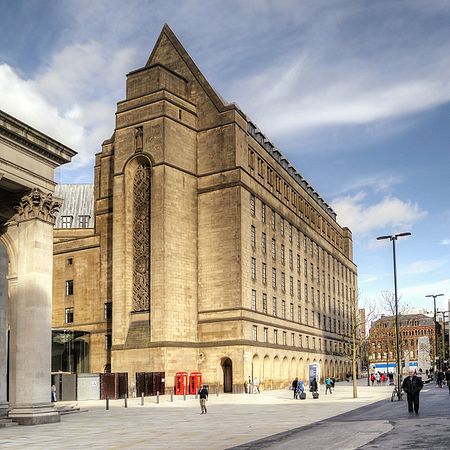Manchester Town Hall Extension
Buildings by Vincent HarrisCity and town halls in Greater ManchesterGovernment buildings completed in 1938Grade II* listed buildings in ManchesterUse British English from April 2022

Manchester Town Hall Extension was built between 1934 and 1938 to provide additional accommodation for local government services. It was built between St Peter's Square and Lloyd Street in Manchester city centre, England. English Heritage designated it a grade II* listed building on 3 October 1974. Its eclectic style was designed to be a link between the ornate Gothic Revival Manchester Town Hall and the Classical architecture of the Central Library.
Excerpt from the Wikipedia article Manchester Town Hall Extension (License: CC BY-SA 3.0, Authors, Images).Manchester Town Hall Extension
Library Walk, Manchester City Centre
Geographical coordinates (GPS) Address Nearby Places Show on map
Geographical coordinates (GPS)
| Latitude | Longitude |
|---|---|
| N 53.4786 ° | E -2.2443 ° |
Address
Manchester City Council Service Centre
Library Walk
M2 5BQ Manchester, City Centre
England, United Kingdom
Open on Google Maps










